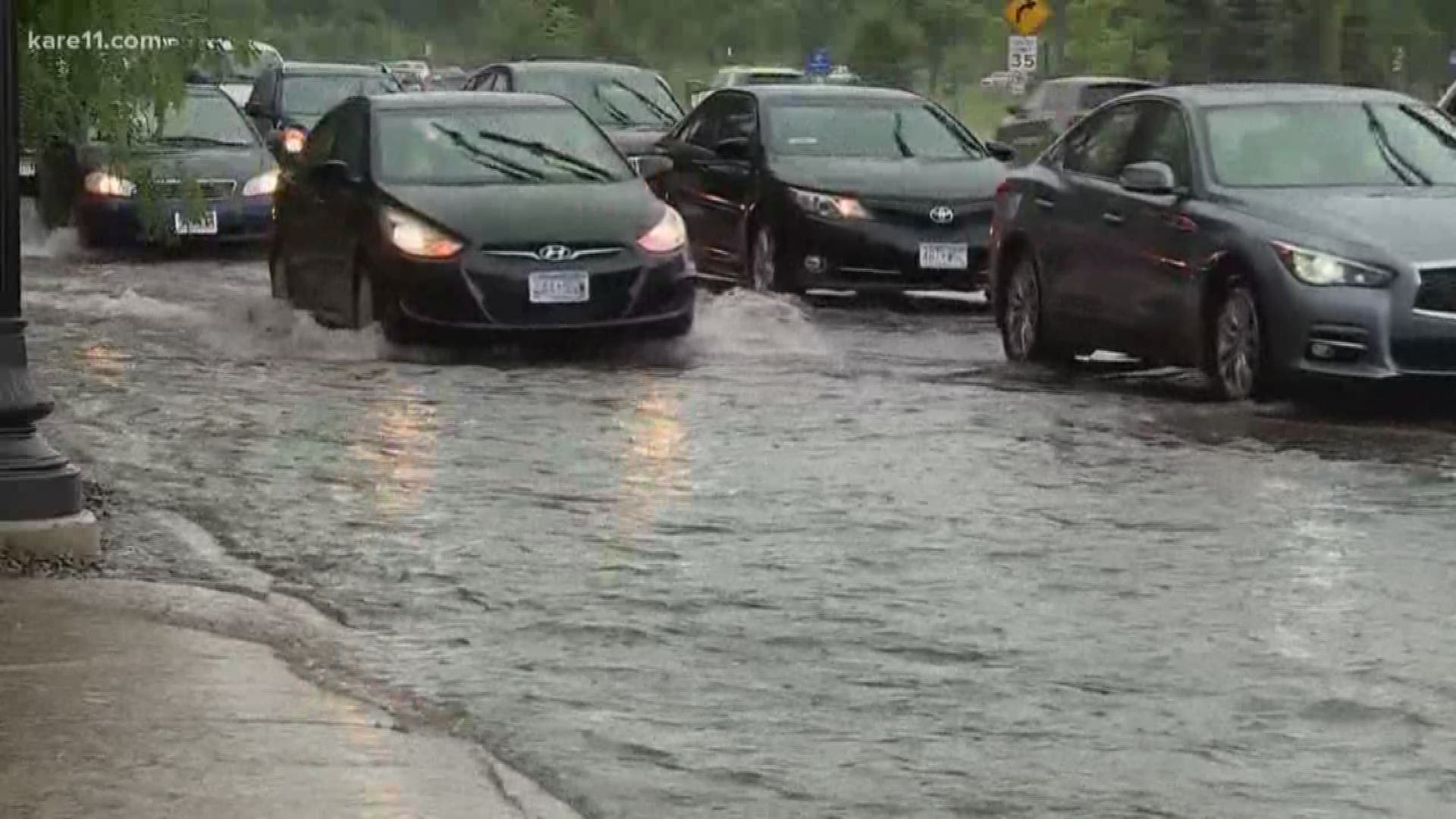CHANHASSEN, Minn. — The National Weather Service will soon begin testing a new system that will send fewer flash flood warning alerts.
Currently, when there is a flash flood warning for a given area, no matter the severity, the NWS sends an alert to the phone of everyone near the wireless towers in that spot.
“Nationwide [the NWS] issued 12,000 flash flood warnings last year. So, that's a lot of wireless alerts that are [sent out to] apartment buildings or are in places that are not necessarily in a life threatening emergency,” said Craig Schmidt, a hydrologist with the NWS Twin Cities, “[People are] starting to turn the system off on their phone, so they aren’t getting alerted in the middle of the night for something that isn’t affecting them.”
Beginning in several test locations this September, the NWS will start categorizing flash flood alerts into three groups: Base, considerable, and catastrophic.
Base means the flood could cause damage to property, but likely won’t put people in danger.
Considerable means flooding is serious enough that people could get hurt.
And catastrophic flash floods are rare, violent, and could be disastrous.
Under the new system, alerts would only be sent out for the considerable and catastrophic categories. The NWS says those two categories only make up about 20 percent of all the flash flood alerts sent out, so the new system would reduce the number of alerts nationwide by 80 percent.
“So far this year, our office [NWS Twin Cities] has issued 17 flash flood warnings,” Schmidt said, “Looking back at what happened and what types of warnings we issued, we probably would have issued a considerable tag on three or four of those.”
Schmidt says cutting back is important, because we're probably going to start seeing more serious flash floods.
“The climate is changing,” he said, “Even in Minnesota, we're seeing every summer, three, four or five, eight to ten inch rainfall storms. Whereas that used to be a one in ten, or twelve year event.”
The Twin Cities is not one of the test locations, but Schmidt says it’s likely this area will see the new system being used by next spring.

